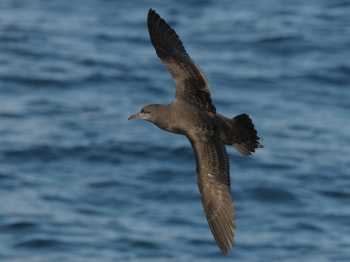Rosemary Clucas (Mathematics and Statistics Department, University of Otago, New Zealand) and colleagues, writing in the New Zealand Journal of Zoology, have looked at historical records kept by muttonbirders of the traditional take of Sooty Shearwaters Puffinus griseus in New Zealand.
The paper's abstract follows:
"Rakiura Māori seek robust population monitoring to guide sustainable management of the annual take of muttonbird (tītī, Puffinus griseus), in southern New Zealand. Analyses of eight muttonbirder harvest records spanning 67 years and consisting of 6744 hunts show systematic commonalities in seasonal patterns of hunt tallies. General linear models (GLMs) explained between 26% and 75% of variation in the number of chicks caught per hunt within each manu (family harvested area), and strong effects of increased catch rates in the rama harvest phase during wet and windy conditions. The absolute differences in the diary mean hunt tallies show that catches vary considerably among whānau (extended family groups) and cannot be reliably used to compare chick abundance between manu. However, tracking trends in hunt success on the same ground by the same whānau offer a cost-effective means of monitoring population abundance. Recording the duration of hunts and detailed measurements of the number of catchers and processors would allow more accurate calculation of catch per unit effort. Community co-ordination of the gathering, maintenance and analysis of catch records would give Rakiura Māori the benefit of shared knowledge for adaptive management of tītī, while maintaining intellectual property and rangatiratanga (self-determination)."

Sooty Shearwater. Photograph by John Graham
Click here for a related paper.
Reference:
Clucas, R., Moller, H., Bragg, C., Fletcher, D., Lyver, P.O'B. & Newman, J. 2012. Rakiura Māori muttonbirding diaries: monitoring trends in tītī (Puffinus griseus) abundance in New Zealand. New Zealand Journal of Zoology 39: 155-177.
John Cooper, ACAP Information Officer, 21 August 2012

 Français
Français  English
English  Español
Español